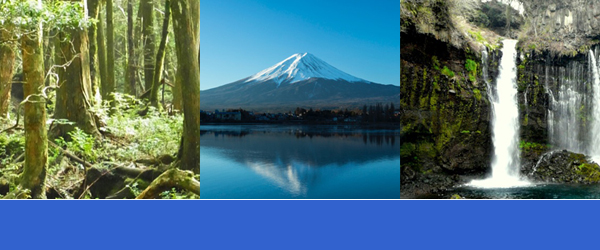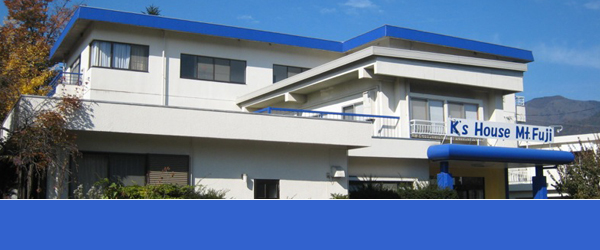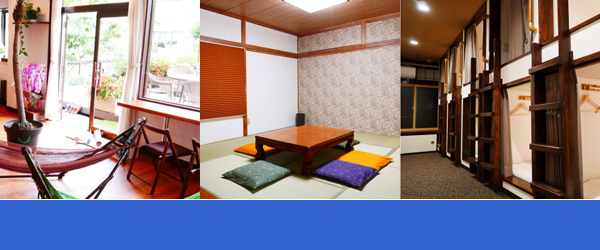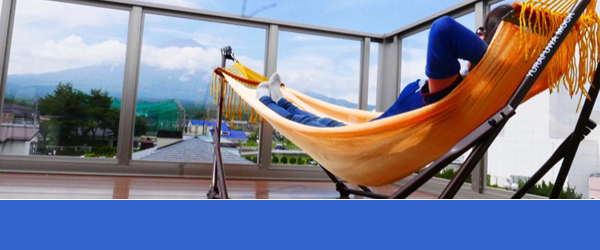One-day hikes! 16 recommended hiking trips in Yamanashi Prefecture
So the weather’s great but you have nothing planned. Time for a day trip!
It’s only natural that hiking is the first thing to come to mind. Walking, breathing in fresh air and being close to nature is a great way to refresh and unwind. However, we cannot have far to go in a day.
Yamanashi has excellent access options from Tokyo and there are numerous mountains that are ideal for one-day hikes. After carefully considering the many hiking trips I have taken in the past, I will present here some recommendations for you. My recommendations cover the following two areas: “Eastern/the Fuji Five Lakes Area” and “Mid/Western Area”.
* The hiking courses presented here typically take between 4-6 hours to complete.
* Please check current course and access information before departing.
About mountains in Yamanashi Prefecture
Yamanashi Prefecture boasts not just Japan’s most famous mountain, Mt. Fuji, but a variety of other famous peaks including the Southern Alps and Yatsugatake. Twelve of those mountains, some of which border other prefectures, were listed in the celebrated work, “One Hundred Mountains of Japan” by mountaineer and author Kyuya Fukada. This includes Mt. Fuji (1st), Mt. Kita (2nd) and Mt. Aino (tied 3rd).
In addition, a further list of “100 Famous Mountains of Yamanashi” was produced by Yamanashi Prefecture and included many mountains from the Daibosatsu, Okutama, Doshi, Fuji/Misaka, Minobu, the Southern Alps, Yatsugatake and Okuchichibu ranges. The mountains vary in altitude from low to high and in degrees of difficulty from beginner to advanced.
Interest in mountain climbing has boomed in recent years but so too has the amount of mountaineering accidents, particularly among beginners and the elderly. In light of this, Yamanashi Prefecture, Yamanashi Police and the Yamanashi Mountaineering Association have produced the “Difficulties Rating of Mountain Climbing in Yamanashi Prefecture”. Please consult it before climbing and select a mountain suited to your abilities.
Yamanashi Mountain Grading (PDF)
Eastern/the Fuji Five Lakes Area
Mt. Daibosatsu 【Difficulty ☆】
[One Hundred Mountains of Japan] [100 Famous Flower Mountains in Japan] [New 100 Famous Flower Mountains in Japan] [100 Famous Mountains of Yamanashi]
Altitude: 2057m

Course Introduction/Access
【Recommended course】 Kamihikawa Pass – Mt.Daibosatsu(a.k.a Daibosatsurei) – Daibosatsutoge – Kamihikawa Pass
【Elevation difference】 470m 【Course time】 Around 4 hours
【Trail access】 《Bus》Bus service from Kai-Yamato Station on the Chuo Line. It operates on a seasonal and specific day basis. 《Car》Free parking lot at Kamihikawa Pass (unavailable in winter due to road closure).
Now commonly known as Mt. Daibosatsu or Daibosatsurei, the main peak of the Daibosatsu mountain range was called Daibosatsudake until its inclusion in the “One Hundred Mountains of Japan” by Kyuya Fukada. This path is actually a circuit trail leading from Kamihikawa Pass, but the pass is accessible by car or bus and there are mountain huts scattered among the trail, which is well maintained. The route is very popular because spots with good views can be reached on the trail within a relatively short time. The summit has no views as it is surrounded by forests, but between the summit and Kaminariiwa there are no obstructions, so you can enjoy views of Mt. Fuji, the Southern Alps and the Kofu Basin as you climb.

Mt.Momokura 【Difficulty ☆】
[100 Famous Mountains of Yamanashi]
Altitude: 1003m

Course Introduction/Access
【Recommended course】 Saruhashi Station – Momokura Water Purification Plant – (East Route) – Mt.Momokura – (West Route) – Forest Road Route End – Saruhashi Station
【Elevation difference】 675m 【Course time】 Around 4 hours
【Trail access】 《Train》Take the Chuo Line to Saruhashi Station. 《Car》There is a paid parking lot near the station.
From the starting point on the bridge near Saruhashi Station you can see the Katsura river below, and from the lookout points on the summit and the way down you can see Mt. Fuji among the surrounding mountains on clear days. For this reason Mt.Momokura has been selected by Otsuki City as one of the city’s “Twelve Views of Mt. Fuji”. If you have time, visit Saruhashi bridge itself, since it is considered one of Japan’s three unique bridges.

Mt. Takagawa 【Difficulty ☆】
[100 Famous Mountains of Yamanashi]
Altitude: 976m

Course Introduction/Access
【Recommended course】 Kasei Station – Mt. Takagawa – Yamanashi Prefectural Maglev Exhibition Center – Kasei Station
【Elevation difference】 555m 【Course time】 Around 4 hours
【Trail access】 《Train》Take the Fujikyuko Line to Kasei Station. 《Car》Park in the paid parking lot at Otsuki Station before taking the train on the Fujikyuko Line to Kasei Station.
Located at the eastern end of the Misaka Mountain range, this mountain has good access options, being accessible from the Kasei Station or Tanokura Station on the Fujikyuko line, as well as Hatsukari Station on the Chuo Line. This mountain was also selected for Otsuki City’s “Twelve Views of Mt. Fuji”. From the open summit you can see mountains such as Mt. Fuji and Mt.Mitsutoge as well as the Maglev test lines and exhibition center extending from the tunnel directly under Mt. Takagawa. One anecdote about Mt. Takegawa recalls a stray dog called “Bikki” that made its home on the mountaintop from 2001 to 2010 that was well-loved by mountain climbers. There is a roadside station called Michi-no-eki Tsuru near the exhibition center which could be a good place to stop by on your descent.

Mt. Shakushi 【Difficulty ☆】
[100 Famous Mountains of Yamanashi]
Altitude: 1598m

Course Introduction/Access
【Recommended course】 Fudoyu Parking Lot for Climbers – Viewing Spot – Mt.Shakushi – Ozasu Pass – Forest Road Gate – Fudoyu
【Elevation difference】 623m 【Course time】 Around 4 hours
【Trail access】 Approximately 15 minutes by taxi from Shimoyoshida Station on the Fujikyuko Line 《Car》Fudoyu/Parking Lot for Climbers (free)
Mt. Shakushi was included by Tsuru city in a list called “12 Beautiful Mountains of Tsuru City” for its beautiful landscape. This course can be climbed in a relatively short space of time compared to other trails. From the summit you can see Mt. Fuji as well as other features of its north face, including Nashigahara and the North Fuji JGSDF Maneuver Area. The Southern Alps are also visible in the west. After descending the mountain you might want to round off your trip by spending time in Fudoya, a hot spring inn or onsen.

Mt.Mitsutoge 【Difficulty ☆☆☆】
[200 Famous Mountains of Japan] [New 100 Famous Flower Mountains in Japan] [100 Famous Mountains of Yamanashi]
Altitude: 1785m

Course Introduction/Access
【Recommended course】 Kawaguchi Asama Shrine – Hahanoshirataki Waterfall – Mt.Mitsutoge – Tenjoyama Park
【Elevation difference】 942m 【Course time】 Around 7 hours
【Trail access】《Bus》From Kawaguchiko Station on the Fujikyuko Line, take the World Heritage Loop Bus and get off at the Kawaguchi Asama Shrine Bus Stop. Alternatively, take the Fujikyu Yamanashi Bus on the Kawaguchiko – Kofu Station North Gate line and get off at the Kawaguchikyoku(a.k.a Kawaguchi Post Office) Bus Stop. 《Car》Travel by bus or on foot from the free parking lot on the shore of Lake Kawaguchiko (Funatsuhama parking lot etc.)
Mt.Mitsutoge is not the name of one mountain, but a collective term for the three summits of Mt. Kaiun, Mt. Osutaka and Mt. Kinashi. It has been known as a sacred mountain for a long time, but in recent years it has become popular for its views of Mt. Fuji and for rock climbing. There are plenty of trailheads and access options, but the trail above begins from the historic Kawaguchi Asama Shrine. Passing through the famous waterfall, Haha-no-shirataki (The White Falls of Mother), your goal is to reach the lower peak of Mt. Tenjo, then descend. The views from Mt. Tenjo are outstanding and descending the final stretch via ropeway is a nice option. Please note that this is a lengthy route, so allow for plenty of time.

Mt.Junigatake 【Difficulty ☆☆☆】
[100 Famous Mountains of Yamanashi]
Altitude: 1683m

Course Introduction/Access
【Recommended course】 Mt. Kenashi Climbing Trail Entrance – Mt. Kenashi – Mt.Junigatake – Mt. Kenashi Climbing Trail Entrance
【Elevation difference】 771m 【Course time】 Around 6 hours
【Trail access】 《Bus》Saiko Sightseeing Bus a.k.a Green-Line (departs and arrives at Kawaguchiko Station on the Fujikyuko Line) Get off at the Mt. Kenashi Climbing Trail Entrance bus stop. 《Car》There is a free parking lot for climbers next to Nishihama Elementary School.
Located north of one of the Fuji Five Lakes, Lake Saiko, it is recommended to climb Junigatake and Mt. Kenashi, to the east, at the same time. While much of the initial trail is covered with forest, but you can enjoy a panoramic view from just below the summit of Mt. Kenashi. However, just beyond this is the core of the course! You can continue going up and down along the mountains, through Ichigatake (1gatake), Nigatake (2gatake), as far as Juichigatake(11gatake), after which the difficulty increases with rocky areas and a suspension bridge. You can begin at Junigatake (12gatake) and head toward the starting point instead, but the day trip hot spring, “Izumi no Yu” near the Junigatake climbing entrance is ideal for resting the body after a long climb.

Panorama-dai 【Difficulty ☆】
Altitude: 1300m

Course Introduction/Access
【Recommended course】Tategohama Parking Lot – Onnazaka Pass – Sanpobunzan (highest peak of the course) – Panorama-dai – Tategohama Parking Lot
【Elevation difference】 509m 【Course time】 Around 4 and a half hours
【Trail access】《Bus》Take the Narusawa/Shojiko/Motosuko Sightseeing Bus a.k.a Blue-Line (Departure/arrival at Kawaguchiko Station on the Fujikyuko Line). Get off at the Shoji bus stop. 《Car》Tategohama Parking Lot (free)
This is a circuit route leading from the shore of Lake Shojiko, one of the Fuji Five Lakes. The view of Mt. Fuji you get from the starting point is said to make it appear as if it is holding a child. During your climb to Mt.Sanpobunzan you will get occasional views of Mt. Fuji, but the real highlight is the great view from the lookout point known as Panorama-dai: the dense forests of Aokigahara spread out below and the majestic Mt. Fuji towering above. The starting point at Lake Shojiko and the mountain ridge you have walked will be visible on the left. If you don’t have time to hike the whole way, Panorama-dai can be reached directly from the shore of Lake Shojiko without passing through Mt.Sanpobunzan (in this case the course would take around 2 hours).

Mt.Ryugadake 【Difficulty ☆】
[100 Famous Mountains of Yamanashi]
Altitude: 1485m

Course Introduction/Access
【Recommended course】Parking lot for climbers of Mt.Ryugadake – Miharashidai Viewing Platform – Mt. Ryugadake – Parking lot for climbers for Mt.Ryugadake
Elevation difference】 579m 【Course time】 Around 3 and a half hours
【Trail access】《Bus》Take the Narusawa/Shojiko/Motosuko Sightseeing Bus a.k.a Blue-Line (Departure/Arrival at Kawaguchiko Station on the Fujikyuko Line). After getting off at the Motosuko Tourist Information Center bus stop and walk for 15 minutes. 《Car》Parking lot for climbers of Mt. Ryugatake (free)
Mt.Ryugadake is climbed from the shore of Lake Motosuko at the western foot of Mt. Fuji and is well-known as the viewing spot for the “Diamond Fuji” phenomenon, where the sun overlaps the summit of Mt. Fuji. Your journey begins for making for the summit where a viewing platform and a azumaya(gazebo) are waiting for you to take a break. Then, turn back and take the opposite fork from where you came. Finally walk a little along this lakeside road to reach your goal. The Diamond Fuji on Mt.Ryugadake can be observed for several days from the beginning of December to the beginning of January. If you are interested, please check the specific date and time in advance. In addition, since this is a winter climb, please bring sufficient equipment and clothing for the weather conditions.

Mid/Western Area
Mt. Hinata 【Difficulty ☆☆】
[100 Famous Mountains of Yamanashi]
Altitude: 1660m

Course Introduction/Access
【Recommended course】 Ojiragawa Valley parking lot – Yadateishi – Mt.Hinata – Yadateishi – Ojiragawa Valley parking lot
【Elevation difference】 890m 【Course time】 Around 5 and a half hours
【Trail access】 About 20 minutes by taxi from Nagasaka Station, Hinoharu Station or Kobuchizawa Station on the Chuo Line. 《Car》Ojiragawa Valley parking lot (free)
The Southern Alps tend to be thought of as vast and distant mountains, but Hinayatama, located in the north, is popular for being relatively easy to approach. The weathered granite covered with white sand near the top gives the odd impression of being on the beach and on a mountain at the same time. Visible from the summit are scenic views of the Yasugatake and Mt.Kaikomagatake.

Mt. Amigasa 【Difficulty ☆☆☆】
[100 Famous Mountains of Yamanashi]
Altitude: 2524m

Course Introduction/Access
【Recommended course】 Kannondaira – Oshitegawa – Mt. Amigasa – Seinengoya – Oshitegawa – Kannondaira
【Elevation difference】 953m 【Course time】 Around 6 hours
【Trail access】 About 20 minutes by taxi from Kobuchizawa Station on the Chuo Line. 《Car》Kannondaira parking lot (free)
Mt. Amigasa is located at the southernmost tip of the Yatsugatake mountain range. Its name literally means “wickerwork hat” because of its conical shape resembling traditional Japanese hats. The rocky top and northern slope of the mountain make it highly recognizable. In addition, there aren’t many tall trees in the surrounding area, meaning excellent views including Mt. Fuji and the Southern Alps to the south, Lake Suwa and the Central Alps to the west and the imposing Mt. Aka, the highest peak of the Yatsugatake mountain range, to the north. Finally, to the north, in a ridge between two peaks, there is a mountain hut called “Seinengoya”, a popular place for climbers to crack open a few drinks and relax.

Mt. Mizugaki 【Difficulty ☆☆☆】
[One Hundred Mountains of Japan] [100 Famous Mountains of Yamanashi]
Altitude: 2230m

Course Introduction/Access
【Recommended course】 Mt. Mizugaki free parking lot – Fujimidaira Hut – Mt. Mizugaki – Fujimidaira Hut – Mt. Mizugaki free parking lot
【Elevation difference】 701m 【Course time】 Around 5 hours
【Trail access】 《Bus》There is a seasonal bus from Nirasaki station on the Chuo Line to Mizugaki Sanso. 《Car》Mt. Mizugaki free parking lot
Mt. Mizugaki, or Mizugakiyama, is located in the western part of the Okuchichibu mountains. Although the bulk of the mountain is made of granite, the area around the summit has a unique landscape, featuring many pillars of rock created from years of erosion and weathering. The trail from the parking lot to Fujimidaira Hut is gentle, but after that the slope gradually increases to a tough rocky surface before you reach the summit. There are two mountain lodges on this route – Mizugaki Sanso and Fujimidaira Hut.

Mt. Kinpu 【Difficulty ☆】
[One Hundred Mountains of Japan] [100 Famous Flower Mountains in Japan] [100 Famous Mountains of Yamanashi]
Altitude: 2599m

Course Introduction/Access
【Recommended course】 Odarumi Pass (a.k.a Odarumitoge) – Mt. Asahi – Mt. Kinpu – Mt. Asahi – Odarumi Pass
【Elevation difference】 235m 【Course time】 Around 4 hours
【Trail access】 《Bus》There is a tour bus active on a seasonal and specific day basis that runs from Enzan Station on the Chuo Line to Odarumi Pass (advance reservation required). 《Car》There is a free parking lot at Odarumi Pass (not available in winter because the road is closed).
Mt. Kinpu has an intimidating appearance befitting of the leader of the Okuchichibu Mountain Range, but it is relatively easy to reach the summit by walking along the ridgeline from Odarumi Pass. “Gojoiwa”, a collection of boulders at the summit that is frequently considered the symbol of the mountain, is a staggering sight to behold. The course time is short, but the journey to Odarumi Pass is a long and winding road, so please allow for plenty of travel time.

Mt. Kentoku 【Difficulty ☆☆】
[200 Famous Mountains of Japan] [New 100 Famous Flower Mountains in Japan] [100 Famous Mountains of Yamanashi]
Altitude: 2031m

Course Introduction/Access
【Recommended course】 Ohira – Mt.Kentoku – Kokushigahara – Ohira
【Elevation difference】 727m 【Course time】 Around 5 hours
【Trail access】 No public transportation.《Car》Ohira parking lot (paid)
A famous Buddhist monk called Muso Soseki, who founded Erinji Temple at the end of the Kamakura period, is said to have practiced meditation here. This place is also known as the place where the photographer Koyo Okada (1895-1972), known for his photos of Mt. Fuji, took one of his masterpiece photos, “Yamanami” in 1942. There are many strangely shaped rocks in this mountain, and this course includes a rocky section known as “Ootoriiwa” (Phoenix Rock) just before the summit. You can avoid it by taking an alternative route on the trail, so please don’t push yourself if you don’t feel confident climbing rocks.

Mt. Konara 【Difficulty ☆☆】
[100 Famous Mountains of Yamanashi]
Altitude: 1713m

Course Introduction/Access
【Recommended course】 Fufu Yamanashi north side parking lot – (Chichikoishimichi) – Konara Pass – Mt. Konara – Konara Pass – (Hahakoishimichi) – Fufu Yamanashi north side parking lot
【Elevation difference】 868m 【Course time】 Around 5 hours
【Trail access】 Around 20 minutes by taxi from Enzan station on the Chuo Line. 《Car》Fufu Yamanashi north side parking lot (free)
It is said that this mountain was given the name Mt. Konara by the Zen Buddhist monk Muso Soseki who supposedly practiced here. In the course, there are two trails known as “Hahakoishimichi” (Mother Love Road) and “Chichikoishimichi” (Father Love Road), with a rocky section known as “Makuiwa” in the middle of the Father Love Road. You can reach the summit without climbing the Makuiwa, but if you are confident in your abilities you can benefit from the openness and great views in this area. From Makuiwa and the summit you can look upon Mt. Fuji, the Southern Alps, Yasugatake and the mountains of Okuchichibu. The grassland at the summit is a great place to relax. It’s so pleasant you might lose track of time, so try not to be late for your descent!

Mt.Kurofuji 【Difficulty ☆】
[New 100 Famous Flower Mountains in Japan] [100 Famous Mountains of Yamanashi]
Altitude: 1633m

Course Introduction/Access
【Recommended course】 Hiramijo parking lot – Hacchou Pass – Mt. Masugata – Mt.Kurofuji – Hacchou Pass – Hiramijo parking lot
【Elevation difference】 578m 【Course time】 Around 4 hours
【Trail access】 Around 30 minutes by taxi from Ryuo Station on the Chuo Line 《Car》Hiramijo parking lot (free)
Mt.Kurofuji is located in the central north part of Yamanashi. As the name might suggest, it is similar to shape to Mt. Fuji. The “Kuro” part of the name means ‘black’ and refers to how, unlike Fuji, forests cover the mountain right up to the summit. You can view both “Fuji” mountains at the same time from Mt. Masugata which is located slightly north of Mt.Kurofuji. Try climbing both mountains together while you’re in the area.

Mt.Kayagatake 【Difficulty ☆☆】
[200 Famous Mountains of Japan] [100 Famous Mountains of Yamanashi]
Altitude: 1704m

Course Introduction/Access
【Recommended course】 Fukada Park parking lot – Memorial to Kyuya Fukada – Mt.Kayagatake – Fukada parking lot
【Elevation difference】 765m 【Course time】 Around 4 and a half hours
【Trail access】 《Bus》Seasonal and specific days only bus from Nirasaki Station on the Chuo Line to Fukada Park 《Car》Fukada Park parking lot (free)
If viewed from the Kofu basin, Mt.Kayagatake closely resembles Yasugatake which is located slightly east of it. For that reason it is sometimes known as “Niseyatsu” (“fake yatsugatake”), but what is even more significant about this mountain to climbers is that this is the location where Kyuya Fukada, author of “One Hundred Mountains of Japan”, passed away in 1971. The Fukada Memorial Park was opened at the foot of this mountain in 1981, ten years after his death, and his famous saying, “One Hundred Summits, One Hundred Joys” is engraved upon a monument there. From the following year onward a memorial service, the “Fukada Festival”, is held there on the third Sunday of every April.

【Read more】













